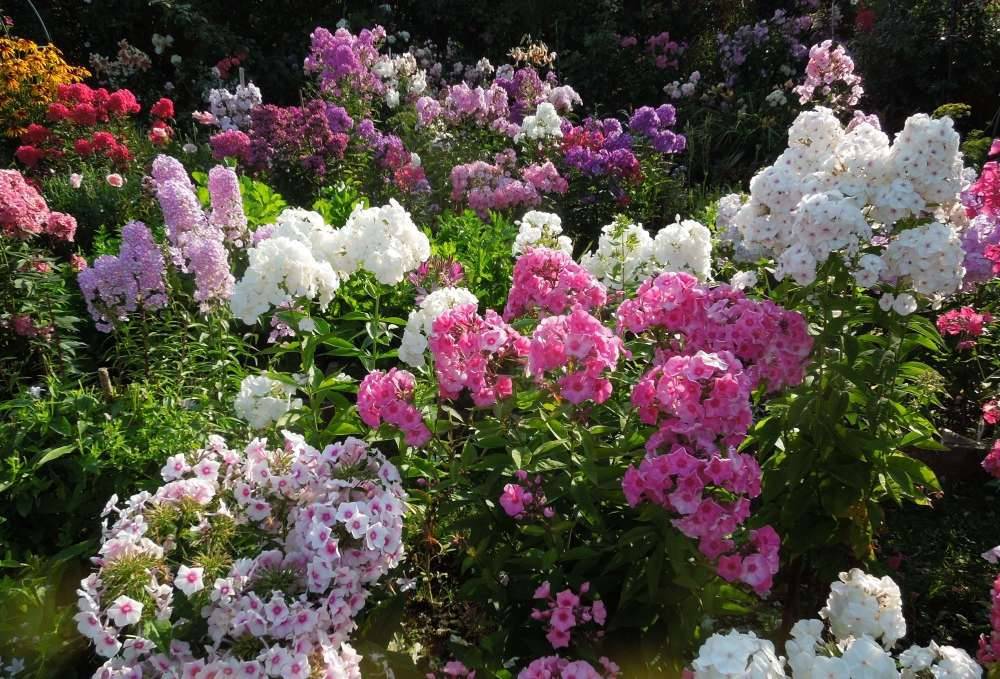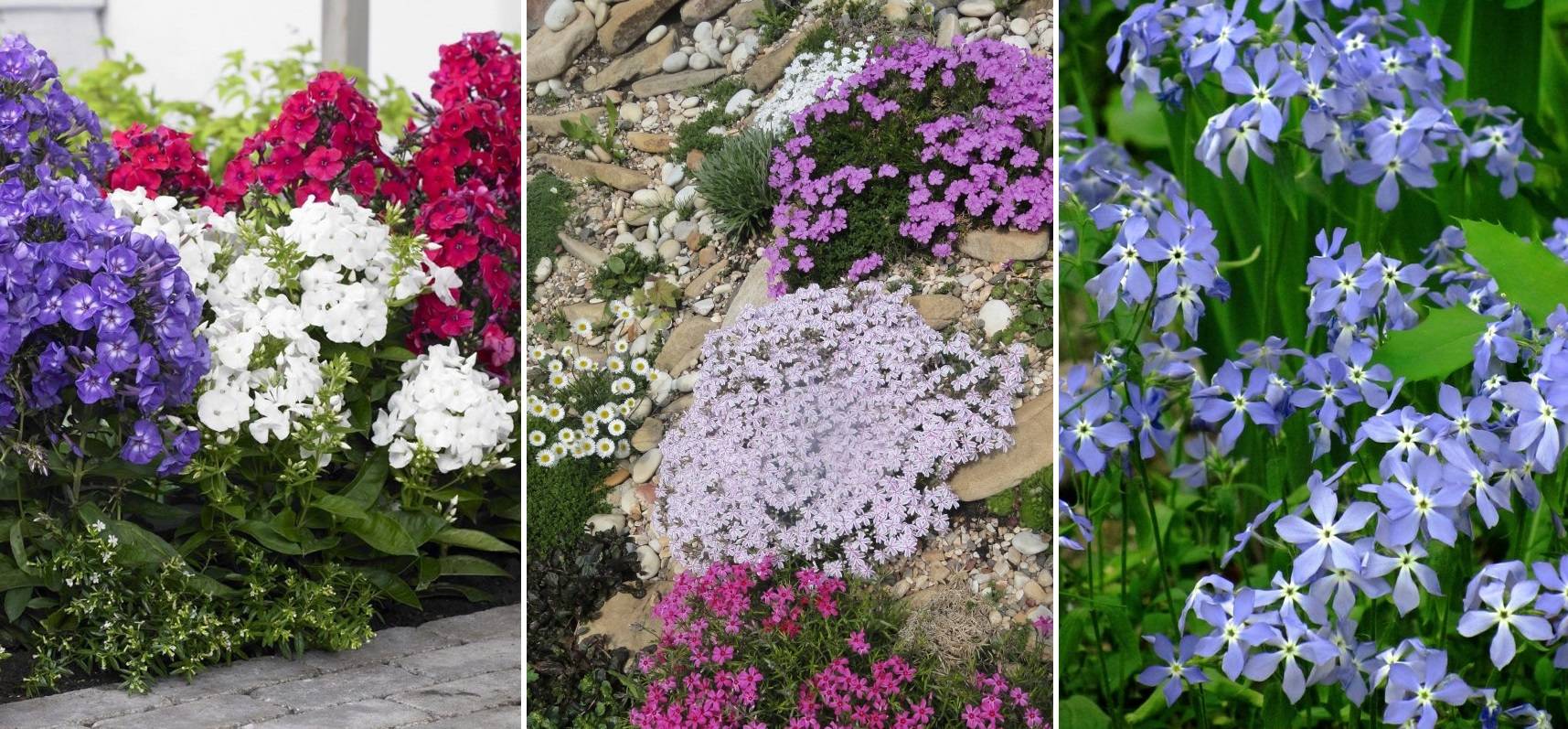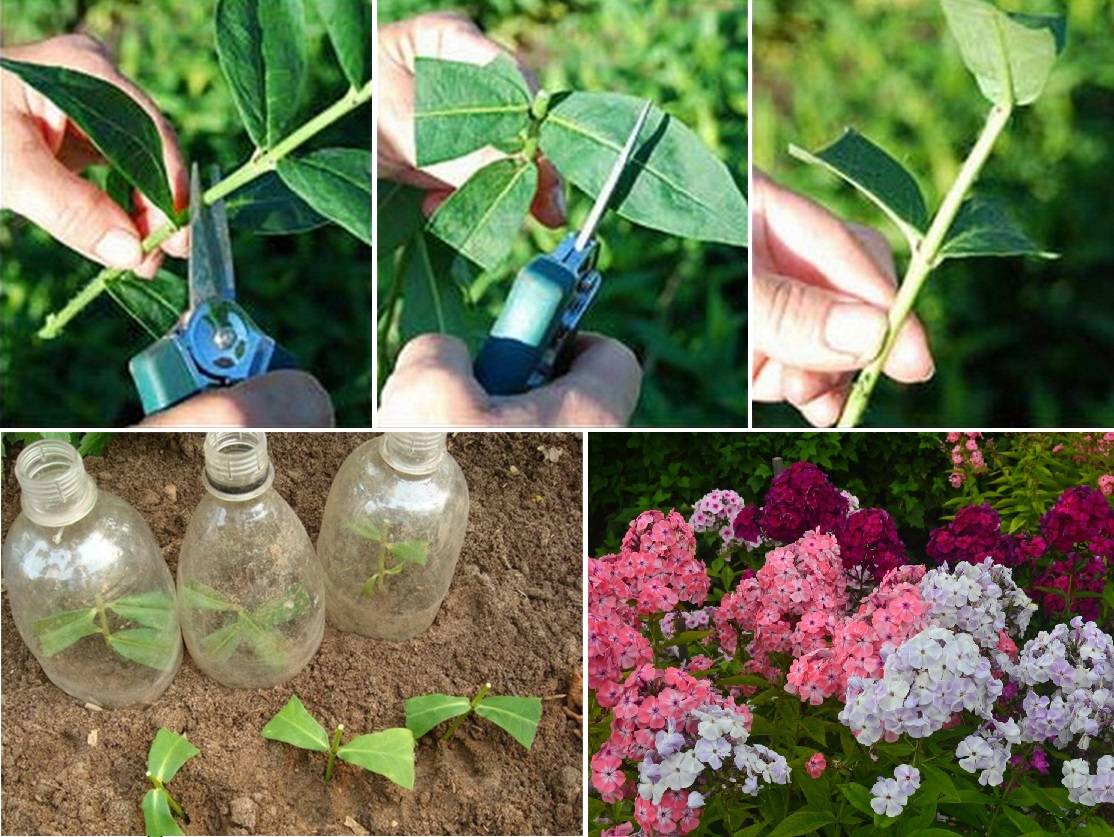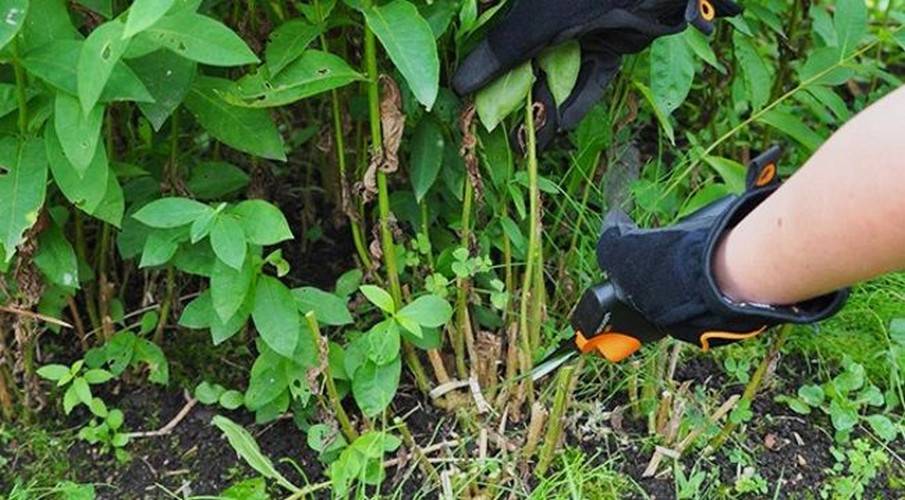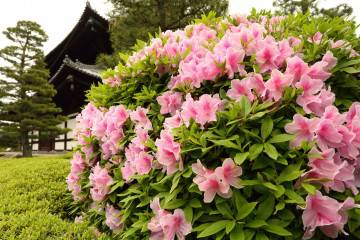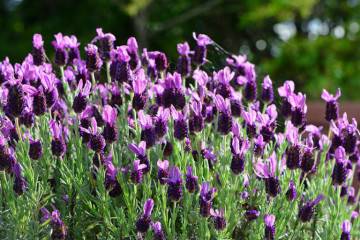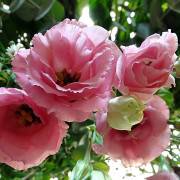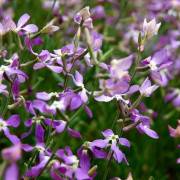Perennial phlox: planting and care in the open field
Content:
For many years, phlox has remained one of the most sought-after plants in horticultural floriculture. Bright inflorescences and a memorable aroma will not leave anyone indifferent. The variety of phlox varieties allows them to be used in various landscape design compositions.
a brief description of
It is customary to call phlox about 70 species of flowers from the Sinyukhov family, about 40 of which are grown as cultivated plants. In Europe, this flower began to gain popularity from the middle of the 18th century. The only type of annual phlox, no less beautiful and popular than perennials, is called Drummond in honor of the English botanist who brought the flower from America to Europe.
Phloxes are unpretentious and extremely tenacious thanks to the harsh climate of North America - their natural habitat. To date, breeders have already developed more than 1,500 varieties, conditionally divided into three main groups:
- ground cover (low, spreading with a carpet);
- bush (can be both high and low);
- friable (medium height).
Phlox subulate (sod)
This is a ground cover creeping variety of phlox with low stems (up to 15 cm), on which small inflorescences of only 2-4 flowers are formed, painted in soft lilac or pink-purple tones. The leaves are small and thin, needle-like. It has two flowering periods: May-June and September. Used to decorate borders and flower beds, easily tolerates a haircut.
Split phlox (canadian)
One of the most unpretentious, friable phlox varieties. Easily tolerates both shade and outdoor cultivation. It is from the planting site that the height of the plant stems depends: from 20 cm in the shade to 40 cm in the sun. Flowers of all shades of blue and lilac have a special shape, their petals are widely spread, for which the plant was given such a name. Blooms in late spring.
Phlox paniculata
Tall perennial bush variety (up to 100 cm in height) with large inflorescences from white to deep purple, including all shades of lilac and pink. The flowers of the hybrid varieties are striped. Sprawling bushes with up to 20 or more shoots. Flowering continues throughout the season.
Phlox Douglas
Another undersized phlox. This is a ground cover variety no more than 10 cm high. It blooms twice a season. The color of the umbrella inflorescences can be white, blue, lavender and pink.
Other varieties
For the design of group compositions in flower beds, perennial bush phloxes are widely used, both undersized (Caroline, hairy, adorable, Candy Twist) and high (spotted, smooth).The former form borders or foregrounds of flower beds, and the latter, reaching 1.5 m in height, are suitable for decorating backgrounds.
Among the popular ground covers, in addition to varieties of Douglas and subulate phlox, florists call perennial dwarf, snow and forked varieties. They breed easily and tolerate drought.
Loose phloxes (for example, Adsurgens, pressed, stolon-bearing) bloom later than ground cover ones, are distinguished by their unpretentiousness and resistance to frost. Fits perfectly into mixborders and curbs.
When phlox perennials bloom
Perennial phloxes have different flowering periods depending on the variety:
- the early ones can bloom in May-June, and sometimes in April;
- the middle ones bloom from mid-summer;
- the late ones begin to bloom in August and continue to bloom until frost.
In addition, there are varieties that can bloom twice a season and bloom throughout the season, from spring to mid-autumn. To find out the exact flowering period, you need to refer to the description of the characteristics of the variety of interest.
Features of growing phlox as perennials
Having planted perennial phloxes in the garden, you should wait for their flowering only starting from the second year. Planting in open ground is preferable, since the cramped conditions of the pot do not allow the plant to feel comfortable.
Reproduction of phlox
Reproduction of the plant is carried out by cuttings, sowing seeds or dividing the bush. In the first case, proceed as follows:
- In the spring, when the shoots of phlox grow up to 12 cm, they are cut off, leaving a stem with 2-3 buds for an adult bush.
- In order for rooting to be successful, the cuttings are placed in water for 1 hour.
- The lower leaves are removed from the shoots and shortened to 6-10 cm.
- The cuttings are buried 1-1.5 cm in the ground in a shaded area and covered with a jar.
- When the plants are rooted, they should be opened.
Picture 3 Sowing phlox seeds
Phlox seeds can be planted in September directly into open ground. If the seedlings are sown in containers, then they should be taken out in the cold in order to stratify the seed, after which it will germinate under room conditions.
The division of the bush can be carried out from spring to autumn. Spring division is most often applied to rare valuable varieties, since at this time the bush can be divided into small parts: it is enough that each of them has at least one bud or shoot and a certain number of roots.
Perennial phlox seeds price
The cost of planting material starts from 15 rubles. for a bag of seeds and from 100 rubles * for a cutting. The decorativeness of the selected variety also affects the price, especially for plants with unusual colors or flower shapes.
Choosing a place and soil for planting
Most varieties of phlox are recommended to be planted in open ground in a sunny and draft-free place. Shade-loving varieties prefer areas under the crowns of trees and garden shrubs. The landing site is prepared in advance by digging a shovel bayonet to the depth.
Optimal timing for planting in the ground
Planting and transplanting procedures can be performed throughout the season:
- spring planting is carried out after the snow melts, the soil dries up and the risk of frost passes (April-May);
- summer planting should be carried out in June, when the weather is cloudy and even rainy;
- it is better to plan an autumn planting at the end of August or the beginning of September.
Care in the garden from the moment of planting in the open ground
Phlox care comes down to fertilizing, watering, loosening the soil, weeding, pest and disease control. The shoots of the plant germinate almost immediately after the snow melts, so the care procedures begin in early spring.
Caring for perennial phlox in the spring in the country
In the spring or early summer, when watering, it is advisable to add a few grams of boric acid or potassium permanganate to each bucket as the first fertilizer. In addition, when phloxes begin to bloom, you can treat phloxes with a solution of growth stimulants a couple of times and feed them with nitrogen-containing preparations so that the flower grows faster. Towards the end of summer, potassium is recommended to extend the flowering period.
Watering is carried out regularly and abundantly, but without excessive waterlogging. Weeding is combined with gentle loosening (phlox roots are very close to the soil surface).
Phlox care in autumn
The main care in the fall is to prepare the plant for winter. When the flowering is over, the stems of the phlox should be cut off, the bush should be slightly spud and mulched. When cold weather approaches, the plant is insulated with a covering material so that the roots do not suffer from severe frosts.
Problems with growing phlox
Despite the unpretentiousness of phlox, gardeners may face some problems when growing them.
- Cracking of the stems. This is due to a lack of nutrition with too dense plantings. It is recommended to thin out the bush or divide it.
- Drying of the lower leaves. The reason is irregular watering that needs to be adjusted.
- Wilting and dullness of leaves. This usually indicates the presence of a fungal infection. You can try to introduce lime into the soil, but if this does not help, then it is best to dig out the bush along with a lump of earth and burn it.
- Thinning and twisting of the upper shoots. The plant was attacked by a stem nematode, which will have to cut and destroy the diseased parts.
- The plant blooms less luxuriantly than in previous years. Most likely, the bush has not been transplanted for a long time (more than 5 years).
Why perennial phloxes do not bloom
There are several reasons why perennial phloxes do not bloom:
- insufficient lighting;
- excessive lighting;
- insufficient watering;
- depleted soil and lack of fertilizing;
- mulching of the soil around the bush is not carried out.
If, in addition to the absence of flowering, there is an excess of green mass, which is unusual for this variety, then this is a consequence of an excess of nitrogen. The situation can be corrected by feeding the plant in autumn with a potassium-phosphorus composition.
How to feed phlox for abundant flowering
What exactly to feed phloxes depends on the stage of plant development. Correct fertilization allows you to achieve larger flowers and extend the flowering period to 1.5-2 months.
There are 3 main phases of plant development:
- active development and growth. Phloxes at this time require abundant watering and nitrogen-containing fertilizing;
- the beginning of flowering.There is a need for potash and phosphorus fertilizers;
- completion of flowering. So that the plant can winter well, it is watered with a solution of potassium sulfate and superphosphate.
Diseases and pests
If you grow phloxes and take good care of them, then diseases and pests will not threaten them. To reduce the risk of viral diseases, it is recommended not to plant flowers in areas where strawberries, loved by nematodes, grew. It is these insects that carry many viruses. It is better to plant phloxes where calendula or marigolds grew, as well as next to them. Before starting planting, the site can be shed with a solution of potassium permanganate, and the roots of the plant can be moistened and treated with wood ash.
Quite often, the leaves and stems of the plant are affected by powdery mildew. This can be avoided if you do not water the phlox with slurry, cold water from a hose. When the flowering of the plant is completed, and all its stems are cut to the very soil, the planting site is treated with a solution of copper sulfate. Also, for the purpose of prophylaxis in the spring, the plant is treated with a fungicide.
In addition, aphids can attack weakened phlox, but this will not happen if you provide sufficient nutrition and watering. If this happens, experienced gardeners recommend treating the bushes with a soap and soda solution.
Perennial phloxes are not difficult to plant and care for, and do not require much attention. From the abundance of varieties of this plant, you can easily choose those that meet your own taste and are suitable for a flower garden in color and size. Bright flowers with a rich aroma will help to decorate the garden, complementing any floral arrangement.
* Prices are for August 2019
